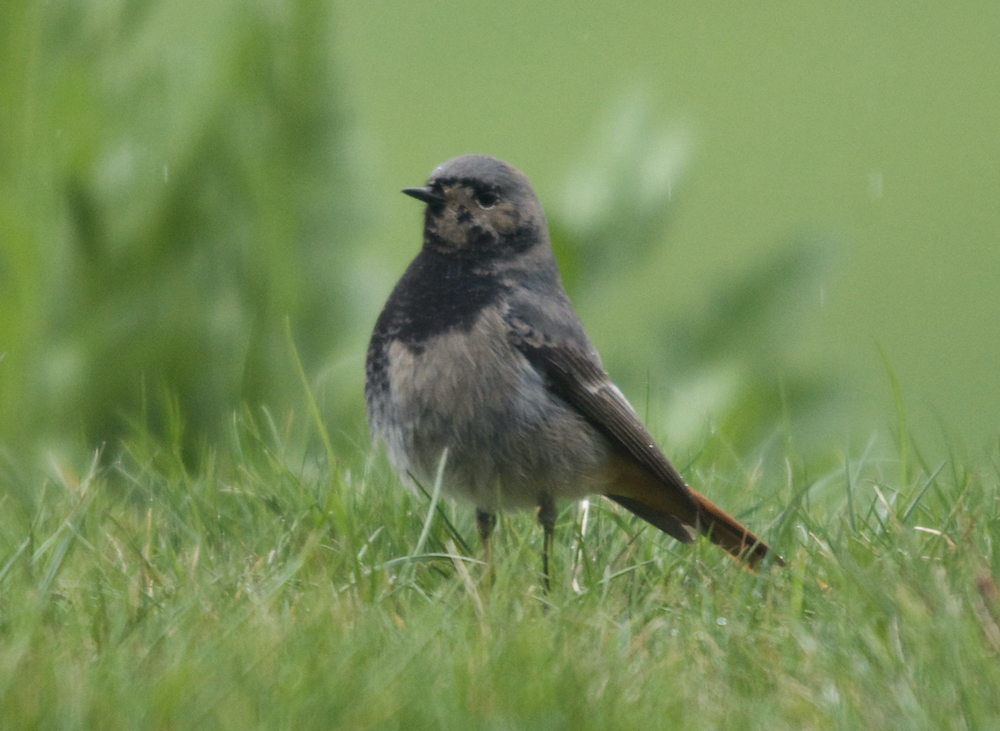English
DOI:
https://doi.org/10.34080/os.v30.20412Nyckelord:
gynandromorfi, chimär, kön, ruggning, tättingAbstract
A supposed bilateral gynandromorph Black Redstart Phoenicurus ochruros in northwestern Switzerland formed a pair with a phenotypically classical male, but apparently was not breeding. The bird was documented before and after moult, when all replaced feathers were again of the same sex type. It was also recorded singing, the song being typical for the species. This is the second recorded case of a bilateral gynandromorph Black Redstart, one of only a handful cases where wild bilateral gynandromorph birds have been observed throughout the breeding season, and the first unequivocal documentation of a presumed bilateral gynandromorph bird forming a stable pair with a typical male.
Nedladdningar
Referenser
Agate RJ, Grisham W, Wade J, Mann S, Wingfield J, Schanen C, Palotie A & Arnold AP. 2003. Neural, not gonadal, origin of brain sex differences in a gynandromorphic finch. Proceedings of the National Academy of Sciences USA 100: 4873–4878. https://doi.org/10.1073/pnas.0636925100 DOI: https://doi.org/10.1073/pnas.0636925100
Bagemihl B. 1999. Biological Exuberance: Animal Homosexuality and Natural Diversity. St. Martin’s Press, New York City, NY, USA.
Bohlen HD. 2006. Illinois sightings of bilateral gynandromorphism in birds. Living Museum 68: 15–16.
Brenner SJ, DaRugna OA & McWilliams SR. 2019. Observations of certain breeding behaviors in a bilateral gynandromorph Eastern Towhee (Pipilo erythrophthalmus). Wilson Journal of Ornithology 131: 625–628. https://doi.org/10.1676/18-179 DOI: https://doi.org/10.1676/18-179
Cadbury JWI. 1973. A gynandromorphic Evening Grosbeak in Burlington County, N.J. Cassinia 54: 15–17.
DaCosta JM, Spellman GM & Klicka J. 2007. Bilateral gynandromorphy in a White-ruffed Manakin (Corapipo altera). Wilson Journal of Ornithology 119: 289–291. https://doi.org/10.1676/06-093.1 DOI: https://doi.org/10.1676/06-093.1
Gill FB. 2007. Ornithology. Third Edition. WH Freeman and Co, New York, NY, USA.
Graves GR, Patten MA & Dunn JL. 1996. Comments on a probable gynandromorphic Black-Throated Blue Warbler. Wilson Bulletin 108: 178–180.
Jones AW & Bartlett HT. 2017. A Bilateral Gynandromorph Northern Cardinal from South Bass Island. Ohio Biological Survey Notes 7: 14–16.
Kumerloeve H. 1954. On gynandromorphism in birds. Emu 54: 71–72. DOI: https://doi.org/10.1071/MU954067g
Martinez N, Nicolai B & van der Spek V. 2019. Redstart hybrids in Europe and North Africa. British Birds 112: 190–201.
Nicolai B, Schmidt C & Schmidt F-U. 1996. Gefiedermerkmale, Maße und Alterskennzeichen des Hausrotschwanzes Phoenicurus ochruros. Limicola 10: 1–41.
Patten MA. 1993. A probable bilateral gynandromorphic Black-Throated Blue Warbler. Wilson Bulletin 105: 695–698.
Peer BD & Motz RW. 2014. Observations of a bilateral gynandromorph Northern Cardinal (Cardinalis cardinalis). Wilson Journal of Ornithology 126: 778–781. https://doi.org/10.1676/14-025.1 DOI: https://doi.org/10.1676/14-025.1
Weggler M. 2005. Sexualverhalten und Fortpflanzungsfähigkeit eines wahrscheinlich gynandromorphen Hausrotschwanzes Phoenicurus ochruros. Ornithologische Beobachter 102: 145–152.
Zhao D, McBride D, Nandi S, McQueen HA, McGrew MJ, Hocking PM, Lewis PD, Sang HM & Clinton M. 2010. Somatic sex identity is cell autonomous in the chicken. Nature 464: 237–243. https://doi.org/10.1038/nature08852 DOI: https://doi.org/10.1038/nature08852

Downloads
Publicerad
Referera så här
Nummer
Sektion
Licens
Copyright (c) 2020 Nicolas Martinez

Det här verket är licensierat under en Creative Commons Erkännande 4.0 Internationell-licens.
Författaren/författarna innehar copyright för varje enskilt bidrag, men samtliga bidrag är publicerade under en Creative Commons-licens, så att vem som helst kan dela och återanvända bidraget förutsatt att copyright-innehavaren erkänns.







